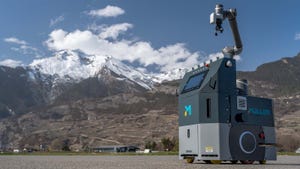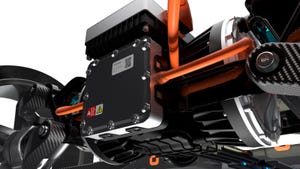It may be molding, but it's liquid
October 1, 2004
|
So, you think you’re an injection molder? Everything changes when you shoot LSR
With the increasing popularity of heat-vulcanized, two-component liquid silicone rubbers (LSRs) in a variety of markets and the technical progress made in LSR molding technologies since their introduction in the late 1970s, many molders see LSR molding as a viable growth opportunity today.
However, John Timmerman, manager of the Technologies Group at Engel Canada Inc. (Guelph, ON), cautions molders who are used to molding solid, pelletized thermoplastics that molding LSR is a different kind of process. He discussed the similarities and dissimilarities earlier this year in a technical presentation at Plastec West 2004 (Anaheim, CA). IMM followed up by asking Timmerman what the three biggest differences are. Here’s what he had to say.
It’s Different
Timmerman can’t seem to put enough emphasis on the fact that successful LSR molding requires a different mindset. “Problems for our customers that are new to LSR start when they try to run LSR like they do the materials they normally run.â€
Timmerman says companies that have successfully made the switch have put their LSR molding systems into a separate room, or even into a separate plant. They have assigned different people in their operations to specialize in molding LSR.
Some have even painted the floor area where their LSR systems are running a different color from the rest of the plant just to emphasize that something different is going on there.“The greatest difficulties seem to occur when a customer just drops an LSR molding system in the same area where they’re molding pellets. They have a hard time coping with the difference,†he says.
It’s a Thermoset
In LSR molding the mold is heated and the barrel is cooled—not the other way around.“Thermoplastics molders are used to changing barrel heats to change the material’s viscosity,†Timmerman says. “LSR molders leave the barrel temperature at one temperature and change the mold temperature. But you’ve got to understand what’s happening in the mold.â€
Molding thermoplastics involves injection, holding, curing, and ejection. Timmerman says LSR molding is much the same. However, being a thermoset, LSR crosslinks in the mold. “You have a much narrower processing window. If you don’t have your pressures and speeds precisely set in LSR molding, you may start to cure the material before completely filling the mold.â€
It Flashes
In thermoplastics molding you have to have a cushion and holding to compensate for shrinkage. But, you’re putting a cold material into a hot mold in LSR molding. It doesn’t shrink, it crosslinks and expands, and that means it can flash.
“The issue is not so much a matter of thinking that you might blow the mold open as it is of thinking about flashing problems. You can’t have normal vents. LSR can flash at a .0002-inch clearance.â€
Contact Information |
You May Also Like




